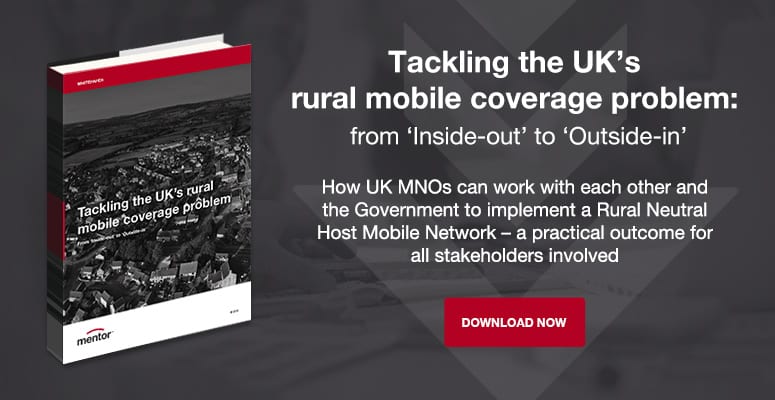Why do we need to talk about Mobile broadband in rural areas?
Where it all began
Two weeks ago, I published a blog on UK fibre rollout strategy, where I talked about how we could release the brakes to take advantage of the upcoming 700 MHz spectrum auction opportunity to fix Mobile in rural areas.
The central message resonated with many people. There were those who agreed and those who hold different views.
So, a frank exchange of views. What could be better for finding the best solution for the country?
One comment was in favour of forcing spectrum license winners to offer 99% population broadband cover within 5 years, claiming that Mobile broadband is worse than fixed on all dimensions, except mobility. And, by the way, it’s complementary to wireline broadband, not a substitute.
As for bandwidth having 70 Mbps per sector – that’s nowhere near enough for today’s needs – much less future needs. 70 Mbps is barely adequate for a household, not a whole village.
Well, who could disagree!
But why did I talk about Mobile and not Fixed?
People don’t necessarily prefer fixed broadband over mobile broadband – in their homes and offices.
True, it’s technically superior and, in practice, it’s 10 times faster and 10 times cheaper in the UK. But, we are big believers in the next generation fixed broadband – full-fibre – and are campaigning to get that rolled out countrywide, as quickly as possible.
More specifically, I was talking about the rural fringe where people have neither decent fixed broadband nor Mobile.
My point is if you can only afford one, do Mobile. That way residents and visitors can use the service outside as well as indoors.
In the UK the rural population have been hoodwinked on this issue for years – and we think the latest ‘opportunity’ – the 700 MHz spectrum auction – is going to be another huge letdown.
If we can afford it, then by all means, roll out both. I did mention using shared fibre to backhaul mobile masts and local full-fibre schemes.
But trying to dig fibre to every home in these remote and sparsely populated places is going to be very expensive – even with the help of the farmers.
Mobile and Wireless can provide some service at a fraction of the cost.
I agree 70Mb/s is not enough. That’s why we suggest adding the unused sub 1GHz spectrum to create a bit more capacity.
Sadly, the approach of demanding 99% coverage from MNOs has never worked. And, following the industry consultation, it’s not on Ofcom’s shopping list for the 700 MHz spectrum auction this time either.
We think deployment needs to be turned on its head and a neutral host rural network built from the ‘Outside-In’.
Mobile broadband for rural in a nutshell
Economics is important to sustain this network and to avoid it ending up like many of its predecessors – in bankruptcy.
We know:
-
- The cheapest network for a given coverage area will have the lowest base station count – that’s why the 700MHz spectrum.
- We can lower costs further if we share the fibre backhaul – by working with local full-fibre schemes.
- The highest revenue comes from enabling all users (and uses) in the area to share the network, irrespective of which mobile operator they contract with. That’s why we like the neutral host.
- Capacity is directly linked to the volume of spectrum. For this reason, add all the sub 1GHz spectrum we can.
Like most people, I’m eager to see the UK be a leader in 5G – but I am bothered by the glacial pace of full-fibre rollout. I know economics work differently in different countries so I would be interested to hear other experiences from elsewhere – and, most importantly, compare prices.
Most UK consumers can get decent priced 4G Mobile and Broadband – but not those living in extremely rural areas.


